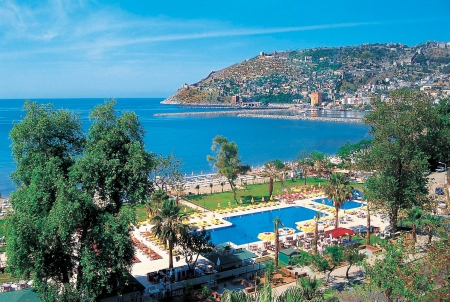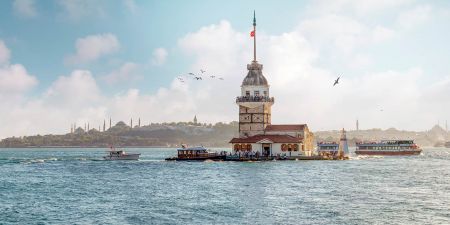-
Home
- Turkey
- Turkey Travel Information
- Turkey Attractions
- The Blue Mosque (Sultan Ahmed Mosque)
The Blue Mosque (Sultan Ahmed Mosque)
Built at the beginning of the 16th-century, this is the only mosque in Istanbul with six minarets. The building was given its name by the 20.000 blue Iznik tiles used in itsconstruction.

The Ottoman Sultan Imperial Mosque
Discover the Top Attractions in Turkey and The Best Turkey Trips now!
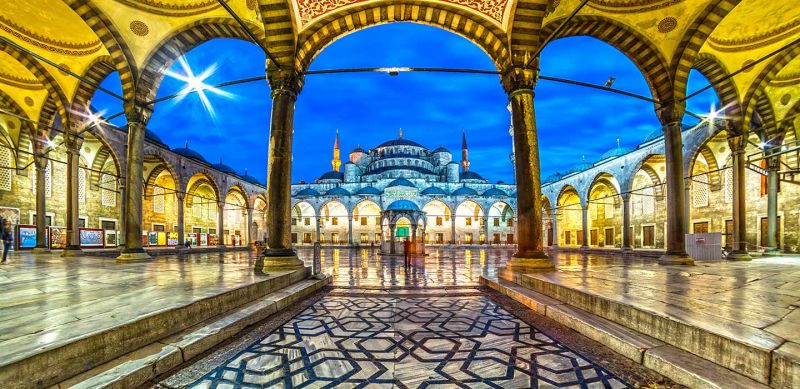
Sultan Ahmet I Reign and Achievements
The structure was planned to be built between the Hagia Sophia and the Byzantine Hippodrome near the Ottoman royal residence, Topkapı Palace. However, it's closed to non-Muslims for 90 minutes at each pray time or so during the five daily prayers and two hours during Friday noon prayers. Sultan Ahmet I was enthroned at the age of 13 years old over an empire spanning parts of three continents—Asia, Europe, and Africa from The capital city, Istanbul. He aimed to make a landmark on the city, so he ordered one of the finest mosques in the heart of the imperial city to be built for him prior to the untimely death of its then 27-year old eponymous patron, Sultan Ahmet I. The magnificent mosque of Istanbul of the majestic city attraction with its elegant composition of ascending domes and six slender soaring minarets. The mosque is giving a panoramic view through its hippodrome.

A mistake produced A Masterpiece
The Blue Mosque was designed to reflect the imperial strength of the ruler to complement the imposing Hagia Sophia, what is clearly exposed in its elephant feet representation pillars, the central dome which is surrounded by a cluster of smaller semi-domes. The mosque took more than over 20,000 handmade ceramic Iznik tiles that decorate the interior, different floral motives and the place got its light through more than 260 windows with stained glass.
The most distinctive architectural elements of this Istanbul mosque is its six minarets, as opposed to the usual two or four of most of the city’s mosques. The story behind the magnificent minarets seems to have a misunderstanding story, as the sultan asked golden minarets ( altın minaret ) to be built, but the architect wrongly got it altı minaret (six minarets). The result made the Sultan upset so instead of fixing the mosque of Turkey - Istanbul, a new 7th minaret was ordered to be added to Prophet’s mosque in Mecca.
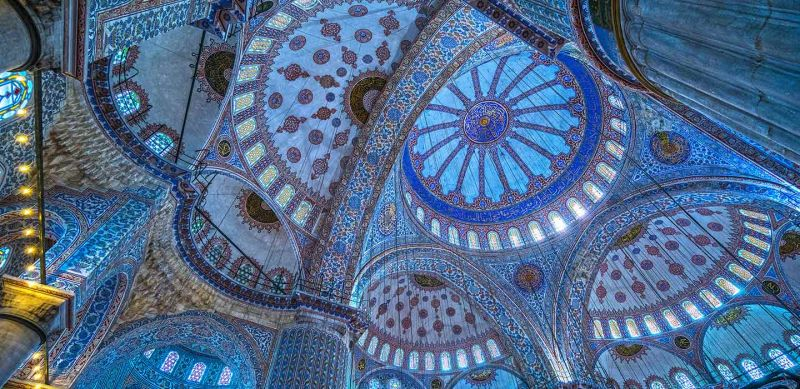
Customize Your Dream Vacation!
Get in touch with our local experts for an unforgettable journey.
Plan Your Trip
The Blue Mosque Architecture and Decorative project
The mosque features two major sections: First, the large unified prayer hall crowned by the main dome and an equally spacious courtyard. In contrast to earlier imperial mosques in Istanbul, the monotony of the exterior stone walls is relieved through numerous windows and a blind arcade. Huge elevated and recessed entrances penetrate three sides of its precinct to provide access to the sacred core, calligraphy art of Koranic verses.
The courtyard’s inner frame is a domed arcade, which is uniform on all sides except for the prayer hall entrance where the arches expand. Four of the pencil-shaped minarets are positioned on the corners of the mosque’s prayer hall while the other two flanks the external corners of the courtyard. Each of these "pencil" minarets has a series of balconies adorning its lean form. To extend the prayer hall of the mosque a series of half domed ceilings were built to join the exterior wall of the mosque. An arcaded gallery running along the interior walls except on the qibla wall facing Mecca. A marble Mihrab set into the center of this wall guides the faithful to the correct direction for prayer. To the right side, a tall and thin marble pulpit (minbar).
The decorative elements of the mosque included geometric bands and organic medallions of bright reds and blues, now replaced with artificial ones. There are 3 entrances to the mosque, and after entering inside one gets shocked by the floral and geometrical interiors. When visiting the mosque, keep in mind to take off your shoes, as part of Muslim tradition when entering a mosque. The major historical city and second Capital of Turkey, Istanbul, comprising more historical attractions including the Hagia Sophia, Topkapi Palace, the Archeology Museum, the Basilica Cistern and the Grand Bazaar.
Blue Mosque of Sultan Ahmed is always opened for visits except for the Muslim prayer times. The Entrance is Free of Charge, all that you should follow is the Muslim dress code for women to be body and hair covering.
Turkish Culture and Arts
Turkey Attractions
- Halicarnassus of Turkey
- Harput of Turkey
- Iotape of Turkey
- Knidos of Turkey
- Phaselis of Turkey
- Priene of Turkey
- Smyrna in Turkey
- Stratonikeia: Where Ancient Greek and Turkish History Meet
- Alacahoyuk: Why This Ancient City is a Must-Visit
- Anavarza: The Hidden Ancient City in Turkey’s History
- Aspendos: Turkey's Ancient Theater and Timeless Legacy
- Zeugma-Zeugma City of Turkey
- Kars- Ruins of Ani of Turkey
- Archaeological Site of Perge of Turkey
- Bodrum Telmissos of turkey
- Burdur Archaeological Site of Sagalassos of Turkey
- Hattusha Open-Air Museum of Turkey
- Kalkan Turkey: A Mediterranean Jewel Along the Turkish Coast
- The Sacred Ruins of Letoon: What Most Turkey Travel Guides Do not Tell You
- The Ultimate Visitor's Guide to Laodikea: Ancient Wonders & Practical Tips
- Miletus of Turkey: A Local's Guide to an Ancient Wonder
- Myra of turkey
- Your Essential Guide to Perge!
- Discover Phokaia in Turkey: A Local's Guide to This Ancient Turkish Treasure
- Manisa-Sardis of Turkey
- Patara: Where Roman Ruins Meet Turkey's Most Beautiful Beach
- Ancient Telmessos Turkey: Your Essential Guide to This Hidden Gem
- Xanthos: The Ancient Lycian Capital of Turkey
- Unveiling the Timeless Beauty of Hierapolis!
- Antalya Termessos of Turkey
- Exploring Limyra in Turkey: A Visitor's Guide to the Ancient Lycian City
- Discover Sagalassos: The Hidden Turkish Ancient City
- Must-Visit Assos in Turkey: Where Greek History Meets Turkish Charm
- Izmir-Pergamon of Turkey
- Adıyaman Nemrut of Turkey
- Aydın Aphrodisias of Turkey
- Cappadocia-Historical Places of Turkey
- Why Beyoğlu is Istanbul's Most Charming District
- Cumalikizik in Turkey: A Living Ottoman Museum
- Damlatas Caves in Turkey: A Natural Breathing Treatment in Turkey's Heart
- Demre in Turkey
- Karain Cave in Turkey
- Uludag in Turkey
- The Princes’ Islands in Turkey
- Discover Tortum Waterfall in Turkey: Your Guide to Turkey's Natural Marvel
- Belek in Turkey
- The Truth About Kas in Turkey: More Than Just Another Beach Town
- Sirince in Turkey
- Visiting Gocek in Turkey? Here's Everything You Need to Know First
- Stunning Spots the Historical Peninsula in Turkey: Complete Guide
- Alanya in Turkey
- The Blue Mosque (Sultan Ahmed Mosque)
- Your Guide to an Authentic Turkish Bath Experience in Istanbul
- Grand Bazaar Istanbul and Spice Bazaar
- Istanbul Aquarium
- Christmas in Turkey: Tourist places and a unique experience for Christmas
Religious Sites
- Bursa Great Mosque
- St. Paul’s Church
- Eshab Kehf Cave of the Seven Sleepers
- Eyüp Sultan Mosque: A Sacred Journey in Istanbul's Heart
- Süleymaniye Mosque: Essential Guide for Istanbul Visitors
- Virgin Mary Church Turkey: A Sacred Journey Through Time
- Basilica of St. John in Ephesus: Ancient Wonder Every Visitor Must See
- Discover the Hacı Bektaş Veli Complex: A Spiritual Legacy
- Hidden Treasure: The Church of St Pierre in Turkey
- Uncovering Ahlat, Turkey: The Hidden Gem of Lake Van
- Sanli Urfa Rizvaniye Mosque And Halil Ul Rahman Lake
- The Untold Story of Van-Akdamar: Turkey's Ancient Island Monastery
- Your Ultimate Guide to Noah’s Ark in Turkey
- Sultan Bayezid II Mosque Complex: The Remarkable Story of Istanbul's First Medical Center
- Hacı Bayram Veli Complex: The Hidden Story Behind Ankara's Most Sacred Mosque
- St. Nicholas Church Antalya: Ancient Secrets Behind Santa's True Home
- The Untold Story of Seljuk Mausoleums and Tombstones in Ahlat
- The Hidden Stories Behind Bursa's Green Mosque: A Visitor's Guide
- Haci Bektas Veli: The Hidden Story Behind Cappadocia's Spiritual Master
- Visitor's Guide to Twin Minaret Medrese Erzurum -Çifte: What You Need to Know Before Going
- Eskişehir Turkey: What Makes it Special
- Ancient Wonders: Your Journey Through the Cradle of the Saints in Hatay
- St. Peters Grotto in Hatay: The Hidden Story of World's First Christian Church
- The Hidden Story of Habibi Neccar Mosque: Antakya's Oldest Islamic Sanctuary
- İsparta St Paul Basilica Turkey: Hidden Treasures of Ancient Yalvaç
- Istanbul - Holy Tourism
- Visiting Mevlana Museum in Konya: More Local Secrets You Need to Know
- Konya - Mevlana Complex
- The Lost Treasures of Sardis ( Sart ) in Turkey: A Visitor's Guide to the Ancient Lydian Capital
- Discover Deyrulzafaran Monastery: A Sacred Journey Through Mardin's History
- St. Paul Church and Well: Your Guide to Turkey's Ancient Sacred Waters
- The Lost Martyrium of St Philip: Uncovering History in Hierapolis
- Harran: Turkey’s Ancient Gateway to Science and Faith
- Siirt-Tombs of Ibrahim Hakkı Efendi and HZ.Fakirullah
- Veysel Karani Complex (Siirt-Baykan)
- Sivas - Great Mosque and Hospital of Divrigi of Turkey
- Trabzon-Maçka Sumela Monastery of Turkey
Museums
- Asclepieion Ancient City in Pergamon of Turkey
- Hatay Archeology Museum of Turkey
- Aphrodisias Museum of Turkey
- Antalya Archaeological Museum of Turkey
- Burdur Archaeology Museum of Turkey
- Denizli Hierapolis Archeology Museum: Your full guide
- Hacı Bektaş Veli Museum of Turkey
- Istanbul Galata Mawlawi House Museum of Turkey
- Rahmi M. Koc Museum of Turkey
- Miniatürk of Turkey
- The Archeology Amasya Museum of Turkey
- Iznik Ayasofya Museum of Turkey
- Alacahoyuk Historic Site and Museum of Turkey
- Istanbul Military Museum of Turkey
- Yildiz Palace Museum of Turkey
- Ataturk Congress and Ethnography Museum of Turkey
- The Museum of Anatolian Civilizations of Turkey
- Trabzon Ayasofya (Hagia Sophia) Museum of Turkey
- Didyma Historic Site of Turkey
- Miletus Historic Site of Turkey
- Assos Historic Site of Turkey
- Troia Historic Site of Turkey
- Zeugma Mosaics Museum of Turkey
- Bodrum Museum of Underwater Archaeology of Turkey
- Mausoleum at Halicarnassus (Tomb of Mausolus) of Turkey
- Derinkuyu Underground City of Turkey
- Zelve Open Air Museum of Turkey
- Pergamon Acropolis Archeological Site of Turkey
- Ephesus Archeological Museum of Turkey
- Hagia Sophia Museum of Turkey
- Istanbul Archeology Museum
- Chora Museum in Turkey
- Great Palace Mosaic Museum in Turkey
- Istanbul Topkapi Palace Museum
- Turkish and Islamic Arts Museum
- Mevlana (Rumi) Museum
- Ataturk and the War of Independence Museum
- Ankara Etnography Museum
- Hatay Archaeology Museum in Turkey
Top Destinations and Attractions
- Troy of Turkey
- Konya Attractions
- Antalya Attractions
- Bursa Attractions
- Fethiye in Turkey
- Nemrut in Turkey: Why its Giant Stone Heads Still Puzzle Historians Today
- Zeugma in Turkey
- Side in Turkey
- Sumela Monastery in Turkey
- Cesme in Turkey
- Bodrum in Turkey
- Cappadocia in Turkey
- Kusadasi in Turkey
- Marmaris in Turkey
- Dalaman in Turkey
- Pamukkale (Hierapolis) in Turkey
- Dalyan in Turkey
- Unveiling Ephesus of Turkey: A Journey Through Time's Grandest Stage
- Turkey Vacations: Everything you need to know about Turkey
Climate of Turkey
Alternative Tourism
Things to Know About Turkey
Water Sports
Outdoor Sports
Winter Sports
Explore Top attraction at Istanbul in 4 Days on Turkey Short Breaks. Visit Istanbul including the Blue Mosque, Hagia Sophia, Grand Bazaar, Topkapi Palace, Petit Hagia Sophia Mosque and More.
Experience The Delights of Turkey Tours visiting Istanbul and Cappadocia in 6 Days, Visits including The Blue Mosque, Devrent Valley, and more in your Turkey Trips with Memphis Tours.
Plan Your Trip!
You Might Also Like
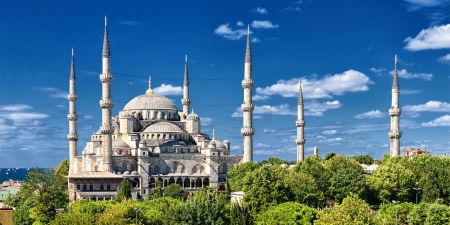
Marvel at Istanbul's iconic Blue Mosque, a masterpiece of Ottoman architecture adorned with 20,000 hand-painted İznik tiles—book your visit today to experience its celestial beauty and 400 years of Islamic heritage!
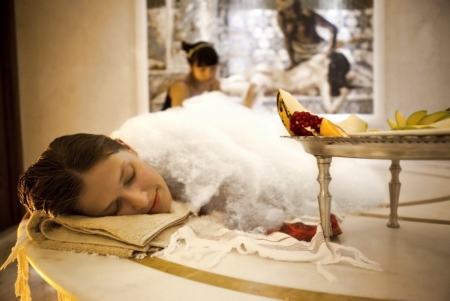
Follow Ottoman sultans' footsteps in Istanbul's historic hammams - experience authentic Turkish baths dating back centuries!
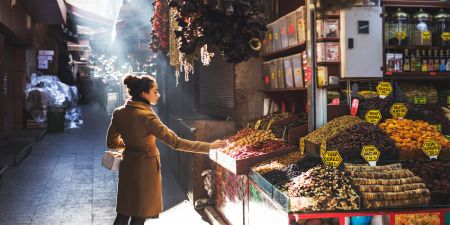
The Great bazaar attracts many people – far too many if you come at rush hour. It’s a good idea to arrive early in the morning and enjoy a cup of tea in one of the cafés whilst the bazaar comes to life. There are thousands of stalls, selling virtually everything, carpets, gold, cloth, spices. The bazaar is a world of its own and it’s easy, but fun, to get lost in the teeming alleyways.
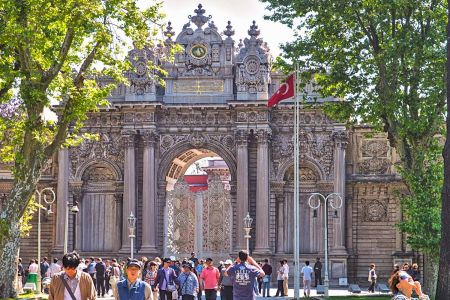
Dive into Istanbul Aquarium's underwater world featuring 17 thematic zones, a rainforest area & thousands of fascinating sea creatures. Read More!
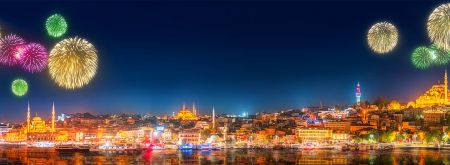
In Turkey Christmas celebrations Turkey are more sort of a ‘Do it yourself Christmas’. you may not find a crowd catering particularly to the Christmas celebrations

Discover Bodrum’s dual charm—ancient Halicarnassus meets turquoise shores. Plan your visit to where history and the Aegean Sea collide!
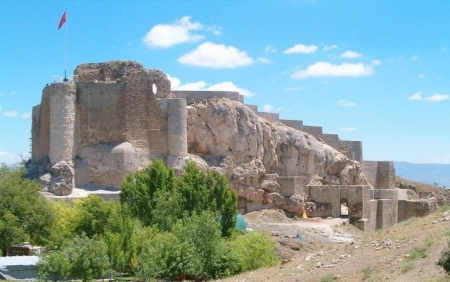
Step back in time at Harput, one of Turkey's oldest settlements, where medieval castles, ancient churches, and Ottoman mosques tell 3,000 years of history—book your cultural exploration today!
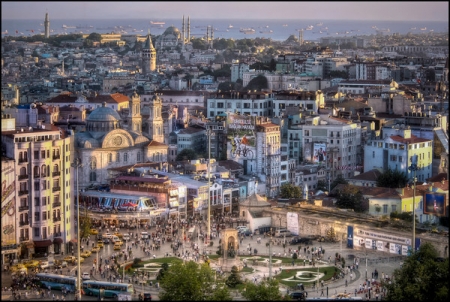
Beyoğlu, Istanbul's vibrant heart, pulses with an intoxicating blend of history and modernity, where street musicians serenade your journey through kaleidoscopic alleyways, and every step unveils a new facet of Turkey's captivating cultural mosaic!
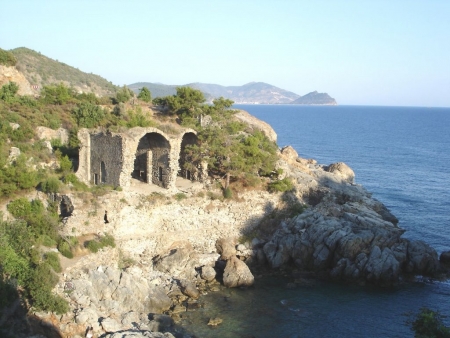
Uncover the hidden ruins of Iotape, a secluded ancient harbor city on Turkey's Mediterranean coast—book your adventure today to explore Roman temples, Byzantine churches, and breathtaking seaside vistas!

Instagram-worthy Cumalıkızık! Capture pastel Ottoman houses, flower-lined alleys & timeless charm in this living museum village!
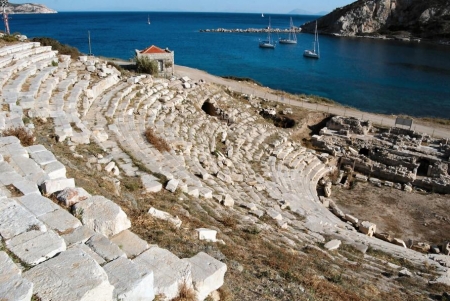
Unlock the secrets of Knidos, the ancient city where art and astronomy flourished—stand where the famed Aphrodite statue once gazed across twin harbors and explore the ruins of a civilization that shaped history. Book your archaeological adventure today!

Damlataş Cave, a stunning natural wonder in Alanya, Turkey, is famous for its ancient stalactites, stalagmites, and therapeutic microclimate, making it a must-visit for nature and history lovers. Read More!
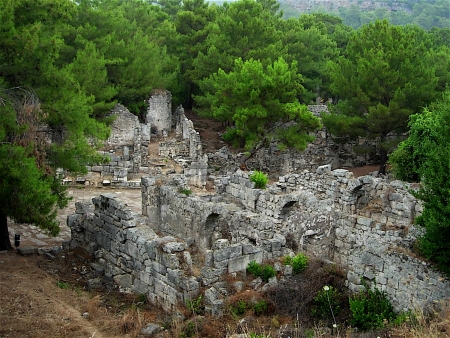
Discover the enchanting ruins of Phaselis, where ancient Lycian, Roman, and Byzantine history meets turquoise Mediterranean waters—book your visit today to explore its harbor streets, amphitheater, and shaded pine forests!
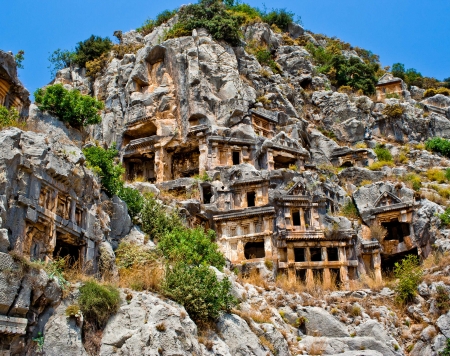
One of the most beautiful provinces of Southern Turkey, one that has survived from ancient times, the homeland of Santa Clause.
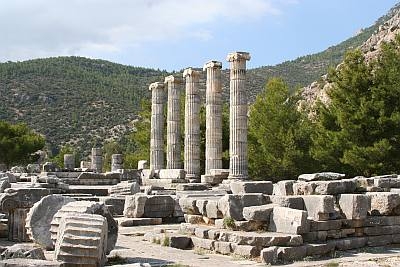
Decipher Priene's 2,300-year-old blueprints—from its democratic bouleuterion to Athena's panoramic sanctuary. Secure your expert-led tour now!
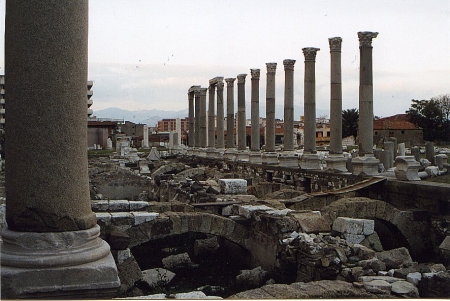
Step into 5,000 years of history at Smyrna (modern Izmir), where ancient agora ruins, Ottoman bazaars, and a vibrant waterfront tell tales of civilizations— experience Turkey's eternal gateway between East and West!

The ancient city of Stratonikeia, situated near the town of Yatağan in Aydin province, was a member state of the Khrysaor Union and was founded in the 3rd century BC. The monuments and ruins of the ancient city are still extant today and are open to visitation.
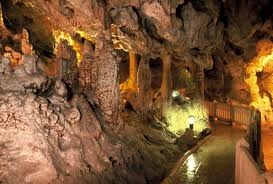
One of the most enigmatic places of the Mediterranean Region, Karain Cave has survived from prehistoric times.

Situated in Alaca town in the city of Corum, Alacahoyuk predominantly shows the Hittite influence during the Bronze Age, although ruins belonging to four different cultural phases can also be seen.

Situated in the Cilicia region in Adana province, the founding date of this ancient city is not known. It emerged during the Roman era but was somewhat overshadowed by Tarsus, the capital of the Cilicia region. In later times, Anazarbus continuously passed hands between the Arabs and Byzantines. Many historic remains along with a majestic Anavarza castle can be seen.

Situated in the Serik town in Antalya province, Aspendos impresses its visitors with its elegant amphitheater and other ancient remains. Because of its location close to the trade routes and the Koprucay River, Aspendos has always been a rich town many rulers desired to dominate.
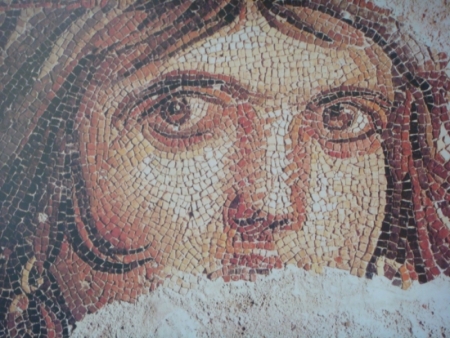
Discover the ancient wonders of Zeugma, home to stunning Roman mosaics and rich history—plan your visit now to witness this archaeological treasure!
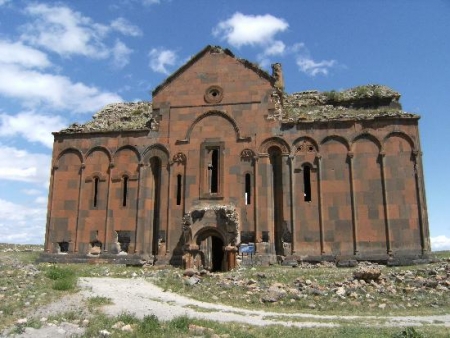
Explore the breathtaking ruins of Ani, a medieval Armenian city near Kars, and uncover its rich history—book your tour today to step back in time!
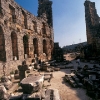
Explore the stunning ruins of Perge, an ancient Pamphylian city famed for its grand colonnaded streets, Hellenistic gates, and one of Turkey's best-preserved Roman theaters—book your historical journey today to walk in the footsteps of Alexander the Great and Saint Paul!

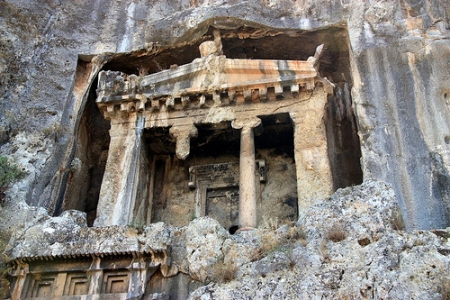
Step into the past at Telmissos in Bodrum, where Lycian tombs and ancient ruins await—book your adventure now to explore this hidden gem!

Princes' Islands: A car-free paradise where Ottoman charm meets Marmara's azure embrace. Read More!

Journey to the majestic ruins of Sagalassos, an ancient Pisidian city with stunning Roman architecture—secure your tour today and experience history come alive!
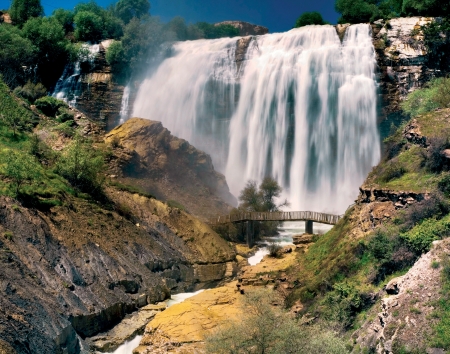
Located in one of the Eastern Anatolian cities with a rich cultural heritage, Tortum Waterfall is one of the most beautiful natural treasures.
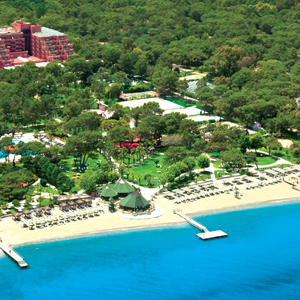
Splendid forest scenery with pine and pistachio trees as well as a magnificent coastline and impressive golf courses and facilities await you for an unforgettable holiday in Belek.

Walk in the footsteps of the Hittites at Hattusha Open-Air Museum, a UNESCO-listed wonder—book your tour today to unlock 4,000 years of history!
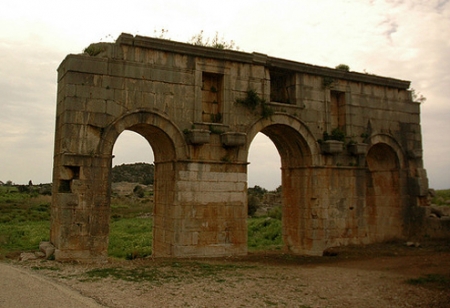
Kalkan, a charming Turkish coastal village, captivates with its blend of cobblestone streets, azure waters, and Lycian history, offering a perfect Mediterranean escape for those seeking relaxation and cultural richness!
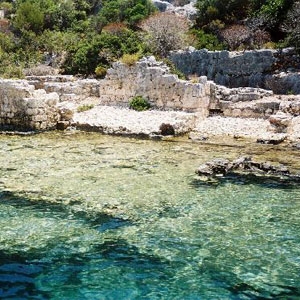
One of the major cities of Lycia and located in the western part of Antalya, Kaş is a natural wonder which impresses visitors with a spectacular geography.
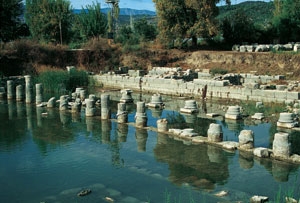
Discover the sacred ruins of Letoon, a UNESCO-listed ancient sanctuary dedicated to Leto, Apollo, and Artemis—walk among legendary history!

As charming as the meaning of the name indicates, Şirince is a lovely little village comprised of narrow streets with old adjacent houses.
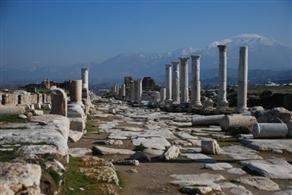
Explore Laodikea’s magnificent Greco-Roman ruins, including its grand theater and temples—reserve your spot now for an unforgettable journey to the past!
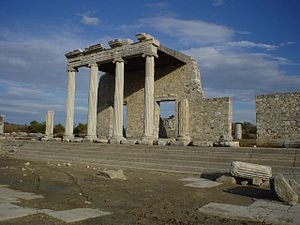
Step into Miletus of Turkey, where ancient Greek wisdom meets Turkish charm, and lose yourself in a time-warp of grand theaters, intricate mosaics, and whispered tales of long-lost glory!
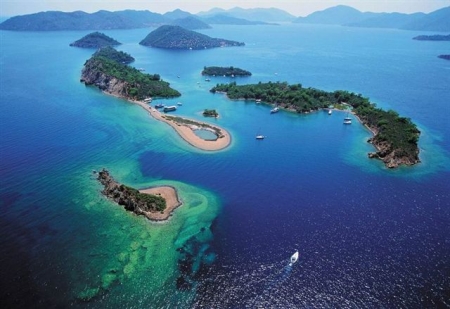
One of the most beautiful cities of the Aegean Region, Göcek, comprised of many islands and bays has been treasured and protected until nowadays.

Myra was the first city of the Lycian Union and surpassed Xanthos in the early Byzantine ages to become the capital city of Lycia. Explore it!
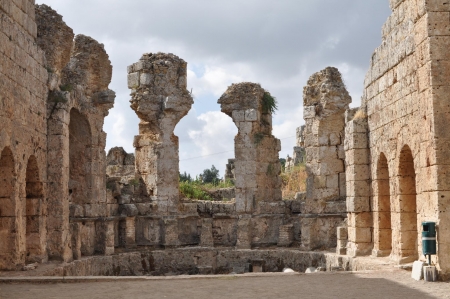
Step into Perge Turkey, where ancient Roman grandeur meets Turkish sunshine, inviting you to wander through a maze of towering columns, intricate mosaics, and whispered tales of gladiators and gods!
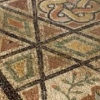
Explore Phokaia's archaeological wonders, from its iconic rock-cut tombs to remnants of city walls, telling the story of this influential Ionian settlement!
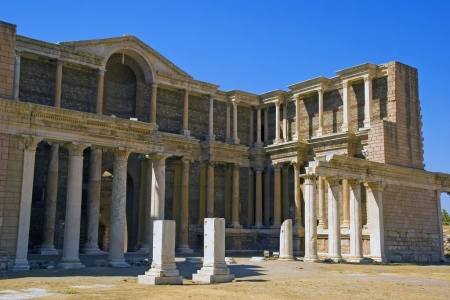
Sardis, once the wealthy capital of King Croesus, offers awe-inspiring ruins like the Gymnasium and the gold-refining district, showcasing its importance in antiquity!
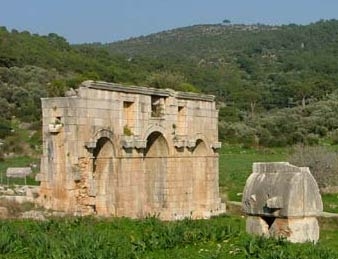
Patara, Apollo's legendary birthplace, invites you to uncover ancient Lycian treasures hidden beneath golden sands, where magnificent ruins whisper tales of bygone glory and sun-drenched beaches beckon with their crystal-clear waters!

Telmessos reveals its Lycian and Hellenistic heritage through striking archaeological remains, including its iconic cliffside necropolis overlooking the Mediterranean! Explore more!
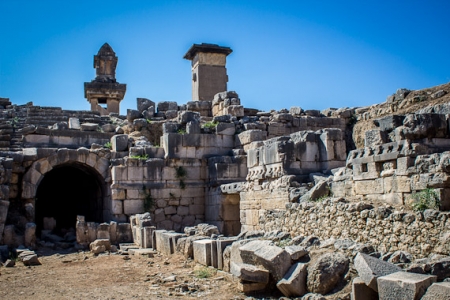
Located in Fethiye, the ancient city of Xanthos once functioned as a capital of the Lycian League.
The city witnessed several wars and was destroyed to be built again eventually. Also the center of episcopacy during Byzantine era, Xanthos is enlisted in the UNESCO World Heritage.

Hierapolis Turkey, a UNESCO treasure nestled beside Pamukkale's ethereal terraces, invites you to wander through Roman ruins, soak in sacred springs, and walk in the footsteps of saints, where ancient wonders and healing waters intertwine in a timeless dance. Read More!
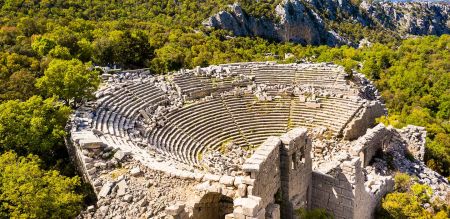
The scent of wild thyme follows visitors through Termessos' labyrinth of ruins, where every crumbling step reveals another vista of Antalya's mountains through gaps in walls that even Alexander couldn't breach!
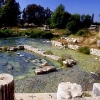
From the legendary reign of Limyra's 4th-century BC ruler to its Byzantine-era bishopric, these ruins near Antalya preserve layers of Lycian, Persian, and Roman influence along the Mediterranean coast!

Nestled in the rugged embrace of Turkey's Taurus Mountains, Sagalassos invites intrepid explorers to step back in time, where perfectly preserved Roman ruins and ancient fountains whisper tales of a forgotten empire, offering a breathtaking journey through history far from the beaten path!
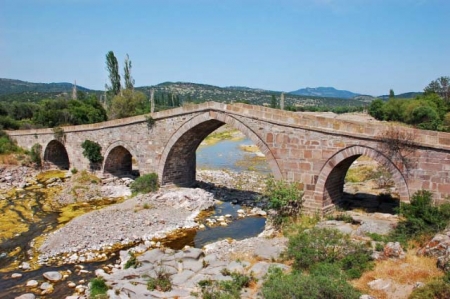
Perched atop a volcanic crag overlooking the Aegean, ancient Assos enchants visitors with its remarkably preserved Temple of Athena, Hellenistic walls, and panoramic views that inspired Aristotle during his residence here!
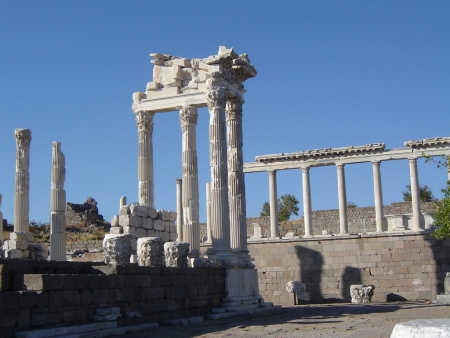
Pergamon's acropolis rises dramatically above Izmir, showcasing its legendary Library, steepest ancient theater, and Altar of Zeus – a monumental testament to Hellenistic power and culture!
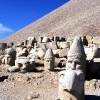
Witness the awe-inspiring grandeur of Mount Nemrut in Adıyaman, where colossal stone heads and ancient tombs crown the summit, a testament to the megalomaniacal vision of King Antiochus I of Commagene!
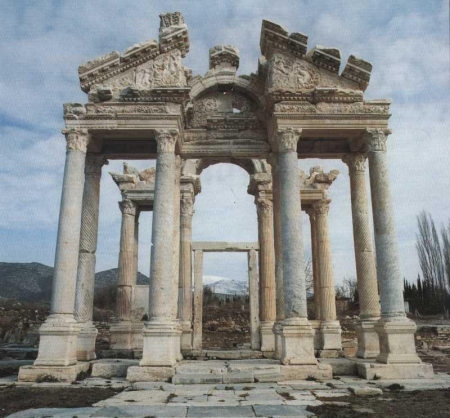
Discover Aphrodisias, a remarkably preserved ancient city in Aydın, where majestic temples, a grand stadium, and exquisite marble sculptures celebrate its legacy as a center of art and the cult of Aphrodite!

Cappadocia's protected landscape preserves extraordinary evidence of human adaptation—from early Christian cave monasteries to vast, ventilated underground cities!
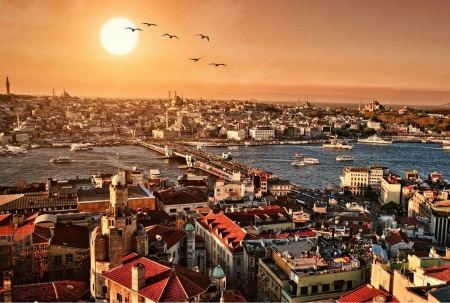
Uncover Istanbul's ancient heart—where Hagia Sophia, Topkapi Palace, and the Blue Mosque bring centuries of history to life. Read More!
